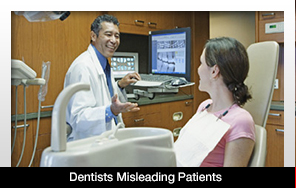Written by Dentistry TodayWednesday, 30 May 2012 07:31

Nearly 500,000 dental patients in the United Kingdom are given incorrect dental information, according to the Office of Fair Trading.
The wrong information was given to convince dental patients to spend money on unnecessary treatment.
According to the findings of the investigation, more than half of the dentists who were seeking to offer this treatment did not display the charges for the treatment at the reception desk. More than 80 percent of patients were not given a written treatment plan.
Despite the few dentists that tried to take advantage of people, most people in the United Kingdom were content with the service their dentist provided, according to the study.
Roughly £6 billion was spent on dental treatment in the United Kingdom from 2009 through 2010. About 42 percent of that treatment was spent on private treatment.

